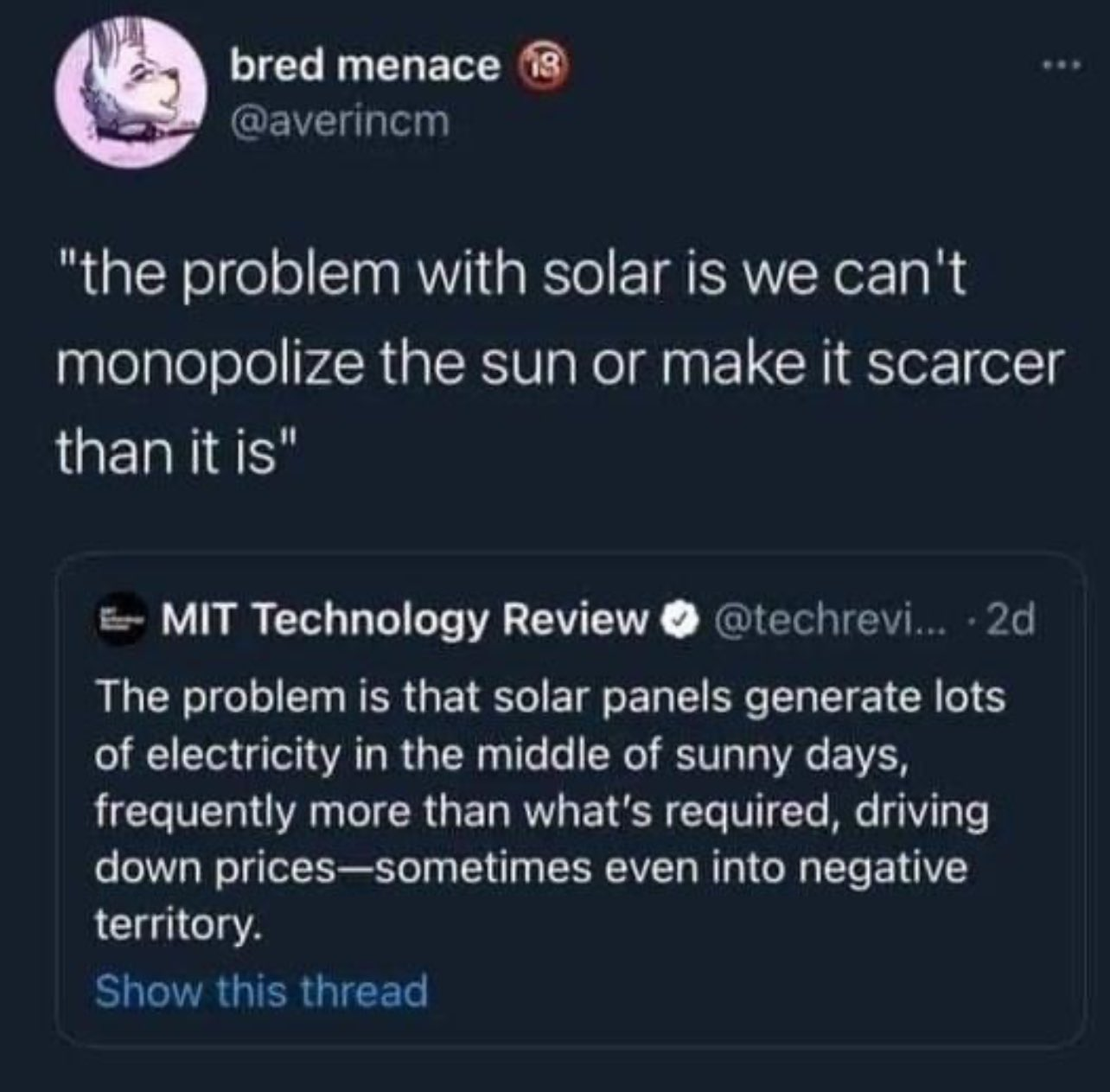this post was submitted on 02 Oct 2024
14 points (100.0% liked)
Microblog Memes
5777 readers
2017 users here now
A place to share screenshots of Microblog posts, whether from Mastodon, tumblr, ~~Twitter~~ X, KBin, Threads or elsewhere.
Created as an evolution of White People Twitter and other tweet-capture subreddits.
Rules:
- Please put at least one word relevant to the post in the post title.
- Be nice.
- No advertising, brand promotion or guerilla marketing.
- Posters are encouraged to link to the toot or tweet etc in the description of posts.
Related communities:
founded 1 year ago
MODERATORS
you are viewing a single comment's thread
view the rest of the comments
view the rest of the comments

From a grid stability point, you can't produce more than is used, else you get higher frequencies and/or voltages until the automatics shut down. It's already a somewhat frequent occurence in germany for the grid operator to shut down big solar plants during peak hours because they produce way more power than they can dump (because of low demand or the infrastructure limiting transfer to somewhere else)
Negative prices are the grid operator encouraging more demand so it can balance out the increased production.
Piggybacking on your grid stability point, another issue I don’t see getting addressed here is ramp rate.
If we install enough solar where 100% of our daytime load is served by solar, that’s great. But what about when the solar starts to drop off later in the day?
A/Cs are still running while the sun is setting, the outside air is still hot. People are also getting home from work, and turning on their A/Cs to cool off the house, flipping on their lights, turning on the oven, etc.
Most grids have their peak power usage after solar has completely dropped off.
The issue then becomes: how can we serve that load? And you could say “just turn on some gas-fired units, at least most of the day was 100% renewable.”
But some gas units take literal hours to turn on. And if you’re 100% renewable during the day, you can’t have those gas units already online.
Grid operators have to leave their gas units online, running as low as they can, while the sun is out. So that when the peak hits, they can ramp up their grid to peak output, without any help from solar.
There are definitely some interesting solutions to this problem, energy storage, load shifting, and energy efficiency, but these are still in development.
People expect the lights to turn on when they flip the switch, and wouldn’t be very happy if that wasn’t the case. Grid operators are unable to provide that currently without dispatchable units.
Store the surprus of energy from the solar panels and use that as a buffer with batteries or gravity
Why not? Just time it and start it hours before, wind energy could help in that too